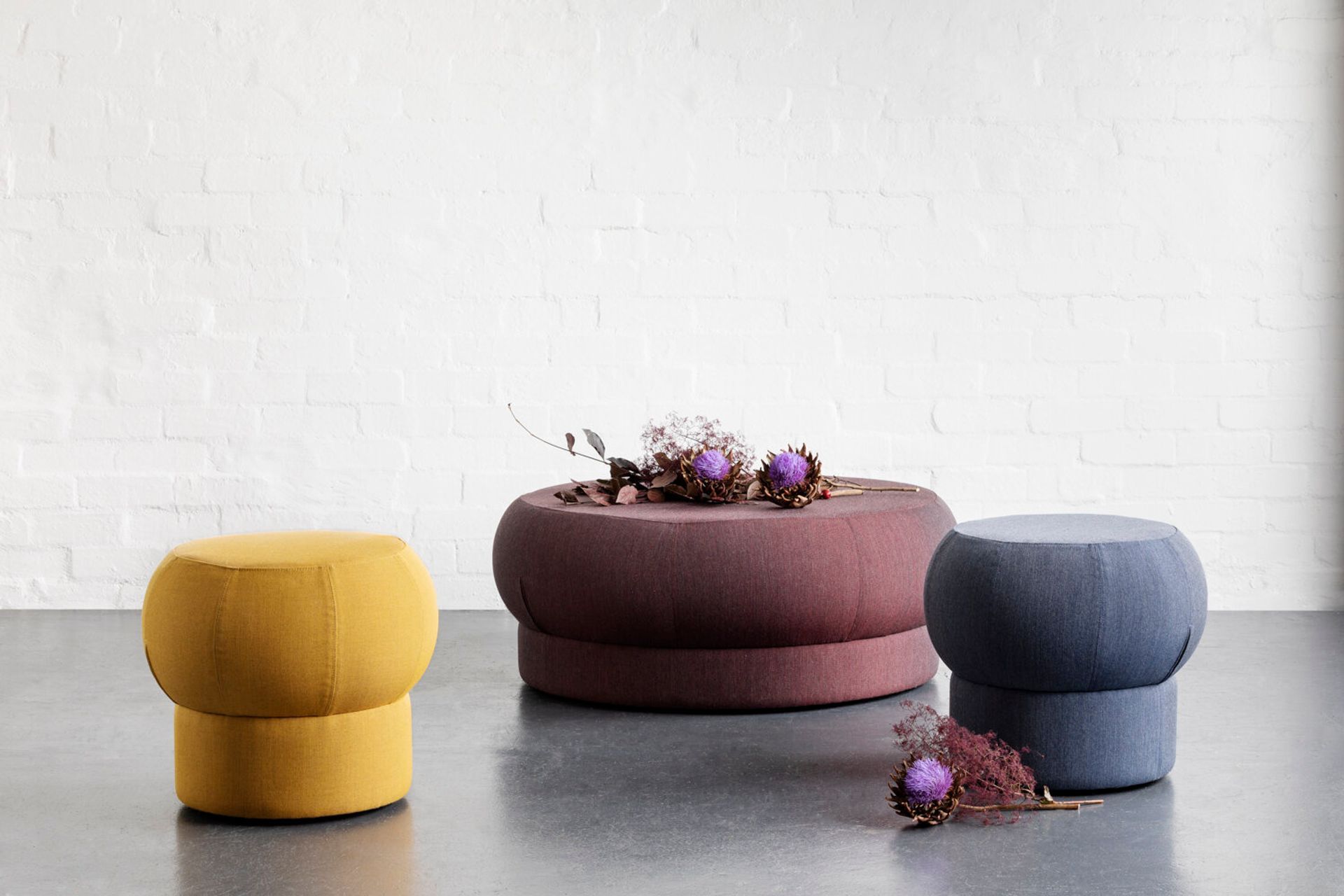Does my bouclé look big in this? Why neotenic design is having a moment
Written by
20 July 2022
•
4 min read

Noticed your furniture is looking a little…chubby lately?
Though puffy, bloated, podgy, underdeveloped, and juvenile may not be the most conventionally complimentary traits by which to describe something, the rise of the neotenic design trend is set to change that. We’ve already seen rectilinear lines and angular corners swapped for curvy lines and rounded edges, however neotenic design takes it a step further.

Interior designers, aesthetes, and tastemakers alike are embracing neotenic design, with contemporary furniture no longer solely equating to utilitarian hard edges or the clean lines and geometric shapes of mid-century modern furniture. Take Dream Weaver by YSG Studio, for example. The expansive Darlinghurst apartment eschews streamlined contemporary style in favour of a cinematic, futuristic, and slightly surreal approach. Rich in colour and texture, the colourful checked puffy furniture in the living area is anchored by a blush pink furry armchair that is almost comical and positively puffy.

Put simply, cute things make us happy
Neoteny refers to the retention of immature or juvenile characteristics in adulthood and is used to refer to both human and non-human animals. The term ‘neotenic design’ was first coined by Justin Donnelly, co-founder of New York design studio Jumbo. Alongside fellow Jumbo co-founder Monling Lee, Justin curated a well-received exhibition on neotenic design held at Brooklyn design and co-working space A/D/O in 2019.
Exuding youth, playfulness and more than a touch of welcome immaturity, neotenic design makes use of both bold and pastel colours; rounded, almost clumsily formed shapes; and squatter proportions, with furniture often looking somewhat compressed.
Blobby, nebulous, often zoomorphic, and quite simply, cute, the neotenic design trend speaks to our inner child. The popularity of neotenic design ties into a theory by Nobel Prize-winning ethologist Konrad Lorenz, who in 1943 postulated that certain juvenile traits found in baby animals – namely a rounded face, big eyes, chubby extremities and a small pudgy body – elicit a positive, nurturing response. Put simply, cute things make us happy.

Consider the Bubuland Home Louis Ball Cushions in boucle. While they look at home in elegant and sophisticated settings, their playful and downright cuddly appearance brings a sense of warmth and comfort to any space, making a house feel like a home. Similarly, the modular Space Furniture Tufty-Time Sofa is at ease with the natural material palette of its surroundings, however, also wouldn’t look out of place in a Disney or Pixar movie.


The beauty of neotenic furniture is that while they take on visually distinct forms, they also play well with other furniture styles. The Bubuland Home Louis 3 Seater Velvet Sofa can easily sit around an angular coffee table or alongside a rectilinear armchair. Meanwhile, the sculptural, organic nature of the Walter Knoll Bao Armchair makes it an apt fit in mid-century modern living spaces, placed alongside chairs with peg legs and a timber veneer credenza.


What’s more, neotenic designs needn’t be placed in equally ‘cute’ spaces. Their bulbous, playful silhouettes allow them to soften typically structured environments. Inspired by the work of French novelist Emile Zola, the Zola Ottomans by Anaca Studio take a more sophisticated approach to neotenic design, embodying the curves that come from a life well lived. The almost bulbous designs lend an artistic touch to the otherwise spartan brick walls and stone floors.
In the same vein, the Tufty-Too Sofa by Space Furniture works to enliven an industrial-style room, with its soft form juxtaposed with the exposed concrete walls.
Décor styles often oscillate from one end of the spectrum to the other, whether it’s elegant and ornate, sleek and contemporary, or utilitarian and reductionist. Neotenic design proves there’s a place for furniture that is equal parts sculptural and adorable, providing a respite from the often – psychologically and physically – rigid forms of the world we inhabit.
More into clean lines and organic forms? Here's how to adapt the principles of mid-century modern design to the contemporary era.
Words by Tanisha Angel